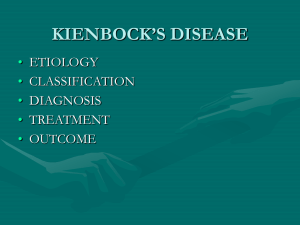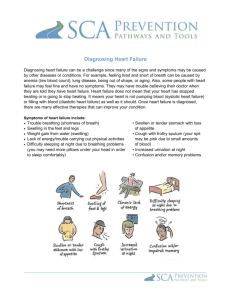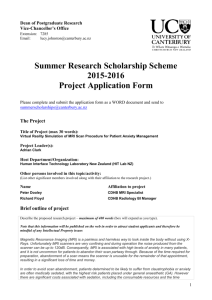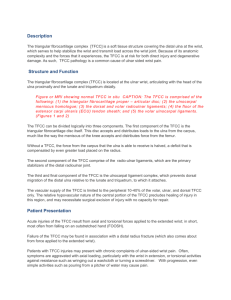Does early return to ADLs after volar plating of distal radius fractures
advertisement
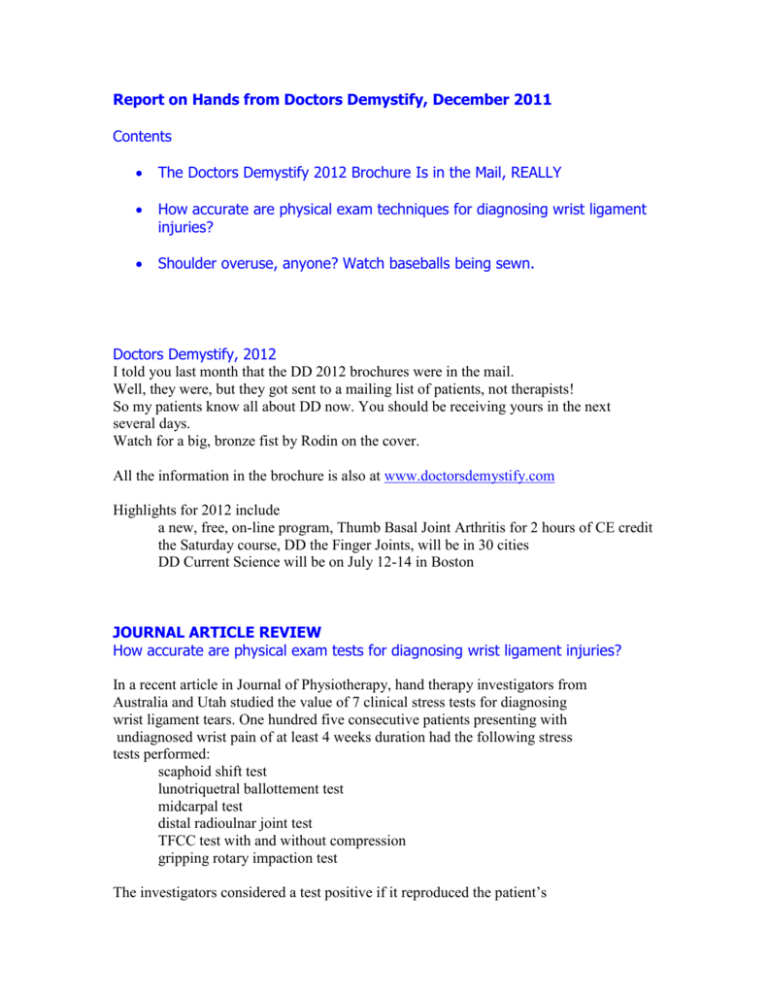
Report on Hands from Doctors Demystify, December 2011 Contents The Doctors Demystify 2012 Brochure Is in the Mail, REALLY How accurate are physical exam techniques for diagnosing wrist ligament injuries? Shoulder overuse, anyone? Watch baseballs being sewn. Doctors Demystify, 2012 I told you last month that the DD 2012 brochures were in the mail. Well, they were, but they got sent to a mailing list of patients, not therapists! So my patients know all about DD now. You should be receiving yours in the next several days. Watch for a big, bronze fist by Rodin on the cover. All the information in the brochure is also at www.doctorsdemystify.com Highlights for 2012 include a new, free, on-line program, Thumb Basal Joint Arthritis for 2 hours of CE credit the Saturday course, DD the Finger Joints, will be in 30 cities DD Current Science will be on July 12-14 in Boston JOURNAL ARTICLE REVIEW How accurate are physical exam tests for diagnosing wrist ligament injuries? In a recent article in Journal of Physiotherapy, hand therapy investigators from Australia and Utah studied the value of 7 clinical stress tests for diagnosing wrist ligament tears. One hundred five consecutive patients presenting with undiagnosed wrist pain of at least 4 weeks duration had the following stress tests performed: scaphoid shift test lunotriquetral ballottement test midcarpal test distal radioulnar joint test TFCC test with and without compression gripping rotary impaction test The investigators considered a test positive if it reproduced the patient’s pain with or without hyper laxity compared to the opposite side. The test was equivocal if there was laxity compared to the opposite side or if the pain on testing was different from the patient’s complaint. Fifty-five patients also had an MRI. Then within 3 weeks from examination, all patients underwent wrist arthroscopy, which is considered the reference standard for diagnosing wrist ligament injuries. When comparing the arthroscopic findings with the stress testing and the MRI findings, the investigators found that there was little correlation. In other words, the provocative tests and the MRI were of little or no value in predicting the presence of a wrist ligament injury. MRI was moderately accurate in diagnosing TFCC injuries and mildly accurate for diagnosing scapholunate ligament injuries. When MRI and stress testing were combined, the accuracy of diagnosing TFCC injuries increased by 13% and of diagnosing lunate cartilage damage increased by 8%. The study was prospective and well-designed and executed. The number of patients seems large enough to answer the authors’ questions; and although the arthroscopists knew the results of the MRI studies at time of surgery, they did not know the results of the therapist’s stress tests. The authors ask, and so should we, why are the stress tests and the MRI not more accurate? They pointed out that 63% of the wrists had synovitis seen arthroscopically. This inflamed tissue certainly contributes to painful motion, especially at the extreme limits, and especially under various specific provocations. Remember, too, that all of these ligaments work in concert, and a slight stretching with bleeding and inflammation can cause pain without causing instability that might be picked up by stress testing or imaging. My experience, both managing patients and tending to my own sundry wrist sprains, says that most of these injuries get better over 4-8 months with reassurance, bracing, and avoidance of symptom-inciting activities. Perhaps if somebody is no better at all at 3 months and whose work or passionate avocation is stalled entirely by wrist symptoms would I consider arthroscopy. So for me, this article confirms that our stress tests are not accurate. Even though patient and examiner alike would like to put a name on a particular complaint, a positive stress test does not forecast doom. The best method of treatment remains rest to let the synovitis subside and any minor tearing to heal, then plan to scope those who have not improved at all sometime after 3 months. link to abstract http://www.ncbi.nlm.nih.gov/pubmed/22093123 Shoulder overuse, anyone? Watch this videoclip about how baseballs are made. Particularly note the repetitive shoulder motions required for stitching. It makes my rotator cuffs hurt just watching it. http://www.reliableplant.com/view/25724/how-baseballs-are-manufactured Happy Holidays everyone from Doctors Demystify. Best wishes, Roy A. Meals, MD If you prefer not to receive these monthly Reports on Hands from Doctors Demystify, respond to this email with "remove" in the subject line.




